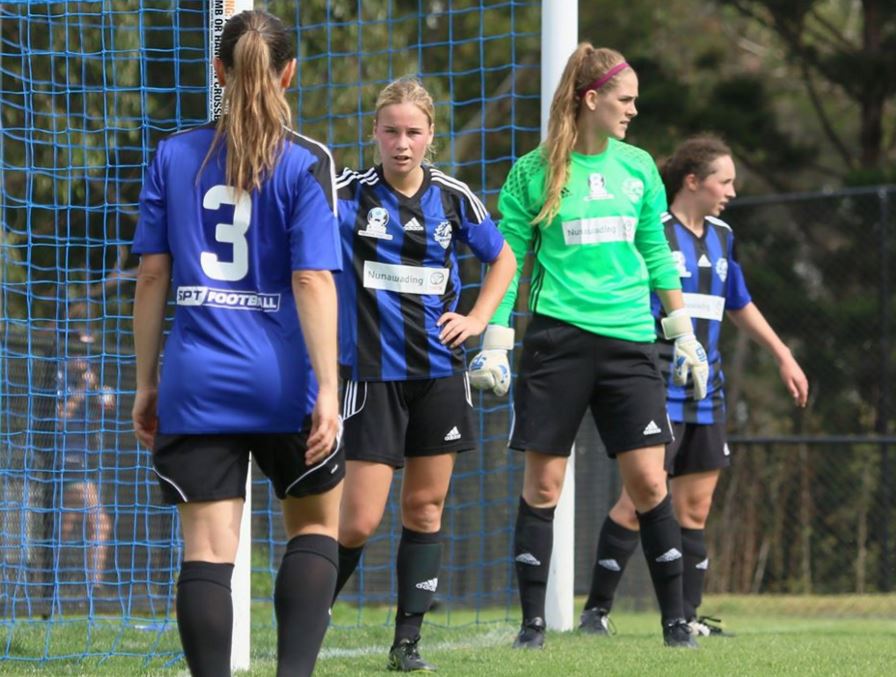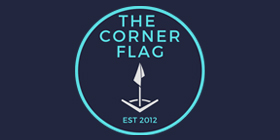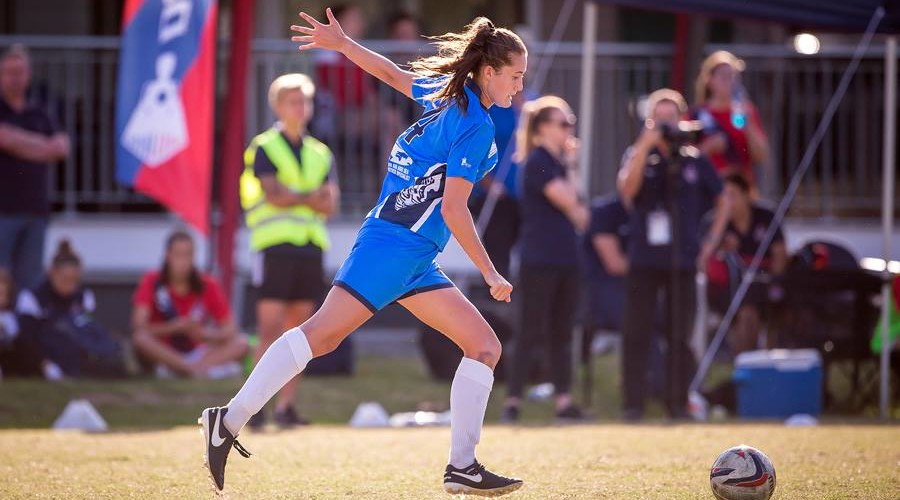“You go with players that you know and that you trust. I came into the job fairly late in the (pre)season so we had to get the squad together pretty quickly. We didn’t have the time to have extensive trials or things like that. You know ’em, you know what they’re capable of.”
That was Adelaide United W-League coach Jamie Harnwell describing how his squad was assembled after his team played Melbourne Victory at Epping Stadium in Round 4.
It was casually delivered and matter-of-fact. Business as usual for the W-League, with nobody batting an eyelid. Things left until the last minute, slapped together in a rush more akin to an indoor team doing the ring-around then a team competing in the national league.
Harnwell’s squad selections matched the words.
American goalkeeper Kaitlyn Savage was a throwback to Harnwell’s Perth Glory 2012-13 squad after clocking a grand total of zero W-League minutes in the interim. Rosie Sutton, a Queenslander who had never played a minute for Brisbane Roar, had her W-League career revived after going unselected in 2014. Alex Gummer returned to Adelaide after her break-out season of 2013-14 had counted for nought, and resulted in literally nought minutes, for her home-state Melbourne Victory the following campaign.
Players picked to return to the national league not because they were the best available, but because they were known to Harnwell, or to Adelaide’s then-administration Football Federation South Australia.
And while that may sound slapdash, let’s not forget that this hastily assembled squad still comfortably accounted for Melbourne Victory on the day Harnwell shared his insights into squad assembly, winning 4-0.
Right now the W-League is in the depths of its off-season and only one thing is certain. Melbourne City are still ahead of the rest and pulling away.
City, the team that arguably won the W-League because they stopped cutting the corners other teams cut as standard practice, are again, doing what one might hope was modus operandi for a W-League team.
Championship winning Melbourne City coach Joe Montemurro is a regular at Victorian Women’s NPL fixtures, scouting and observing in preparation for summer. And while that sounds simple, it’s the sort of advantage that right now gives him an edge on at least half, if not the majority of clubs in the W-League.
Melbourne Victory has seemingly responded to claiming the W-League wooden spoon by ignoring that it happened. No coach appointment, no updates to the team’s social media accounts since January 19, no interest in leveraging off the success of blooding youngsters by following their winter progress through NPL Victoria Women’s (perhaps a sign of unease that any of them will commit to coming back next summer).
Adelaide United is, in the public domain at least, still sorting out who will run the team (FFSA or the A-League administration). The administrative tug-of-war has been born out in Perth Glory’s yo-yo status year to year.
Western Sydney and Newcastle unashamedly went young in 2015-16 rather than attempt to build a contending team. An admirable PR line, but it’s worth remembering that Adelaide went with youth for two seasons from 2013-15 only to have the likes of Alex Chidiac, Monique Iannella, Jenna McCormick, and the coach who had instigated it all, Ross Aloisi, leave for better opportunities. Waiting around for a young W-League team to mature is fool’s gold.
And if Central Coast Mariners do commit to returning to the W-League in 2016-17, it’s hard to imagine they won’t be diluting the talent pool for Western Sydney and Newcastle by competing with them for NSW players that don’t make, or don’t choose Sydney FC.
So, what’s the solution?
The responsibility has to fall on state federations to embrace the words “National” and “Premier” in their NPL Women’s competition title.
These premier competitions have a responsibility to unearth, and promote the best talent available to advance to the W-League level. Not just for the state they represent, but to remember the word National in the competition title and do their bit for the entire country.
Action has to start now. Adelaide didn’t hold trials last summer, but it’s worth noting Melbourne Victory did. Trialling 40-odd players in the space of about a week, only a month from the season start, got them the wooden spoon.
The discussions about players ready for the next level has to be a constant dialogue, open to public participation. No player that got an opportunity in 2015-16 should take for granted that a winter treading water will be ignored come summer. A catalogue of NPL level video, scouting reports and media analysis needs to be promoted.
Coaches at NPL level have a responsibility to start pushing names now so W-League coaches, or administrators in lieu of clubs yet to appoint a coach, might come and watch, or at least chase up some tape, or make a phone call to start building relationships with players. Not just leave it to the random chance of trials when time is precious and season kick-off is coming.
TCF has decided to get the ball rolling by “introducing” some players to the rest of the nation, that every W-League coach needs to know for the coming summer.
***
Scouting Report: The Victorian diamonds in the rough.
1. Rachel Binning – Centre Back, 19 – Calder United (feature image)
With an imposing physical presence and a fierce competitive attitude, Binning is an obvious candidate for a W-League opportunity. Comfortable enough playing the ball and strong in the air, Binning should capitalise on the place most affected by positional scarcity for Australian players. With midfielders being repositioned to defence in the last two World Cup cycles (Servet Uzunlar in 2011, Alanna Kennedy in 2015) it would do the country well to have more Australian centre backs at W-League level, rather than continue to have it being one of the main positional gaps plugged by internationals.
2. Emily Shields – Goalkeeper, 26 – Box Hill United

In a league where Erin Herd can make a W-League bench without playing full-field football for four years, then come back the next year and make a bench again, with all due respect the bar has been set low.
Shields is arguably the “best kept secret” of Victorian football after the American played casually at lower league Yarra Jets for a number of seasons. Her break-out year at Box Hill United has seen Shields make a number of dazzling saves and show confidence in the air. There are some flaws to iron out, namely distribution and the odd mistake, but again positional scarcity suggests Shields would be a more than capable W-League prospect.
3. Aliesha Newman – Winger, 20 – Calder United

Newman has the hallmarks of a player who will play better when surrounded by better teammates at the higher level. Devastating pace, good finishing skills and a reliable first touch, Newman has the potential to be a strong role player in a defined wing position.
At 20, it’s ridiculous to suggest Newman could be a “mature age late bloomer”, but in a league where the thinking will favour a 15 or 16 year old with similar raw ability over a player Newman’s age, the terminology is worryingly ominous.
4. Lia Privitelli – Winger/Forward, 21- FC Bulleen Lions
Privitelli started winter of 2014 with a blaze of goals, searing pace and eye-catching displays that had an organic buzz around the Victorian football community that she was heading for the next level.
Then a broken toe put an end to it all. Privitelli had battled to overcome a career-threatening hip injury to get on the pitch for 2014, but the new injury had her off the radar as quickly as she’d appeared.
More injuries rolled through to interrupt 2015, and even with the number of Melbourne-based W-League teams doubling for the 2015-16 summer, Privitelli’s 2014 hype was long forgotten.
A more measured start to the 2016 season has Privitelli steadily building another body of work. The spectre of injuries loom, but Privitelli still has the attributes to finally get her W-League shot.
5. Kate Fotopoulos – Midfielder, 21 – Box Hill United
Fotopoulos might be the best argument for why scouting is necessary to unearth talent for W-League selection rather than relying on trials.
Her laconic, casual style may not win over a coach in a short period of time. The technique, movement and passing is there to the more patient viewer.
The midfielder played for Victory in a pre-season friendly in their championship year of 2013-14 but wouldn’t figure in the season proper. An injury late in the 2014 state season left Fotopoulos limited in 2015, but a promising start to this year’s NPL is starting to make waves.
6. Olivia Ellis – Wingback, 17 – FC Bulleen Lions

This one is cheating slightly, as Ellis is already in the W-League system and made two brief substitute appearances for Melbourne City in 2015-16.
But herein lies the challenge for the W-League to compete with Melbourne City. Which club can convince Ellis a season with them, potentially interstate, will be of greater value to her development than being a sparingly-used squad member training at the City Football Academy?
Ellis has returned to NPL with the confidence to dribble at opponents, strong concentration and positioning, good passing and an impressive level of aggression. While Ellis does not have the “instant Matilda” X-factor of teen prodigies like Ellie Carpenter or Steph Catley, it is not unreasonable to suggest she is capable of developing into a national team player.
Feature Image: Anita Milas

